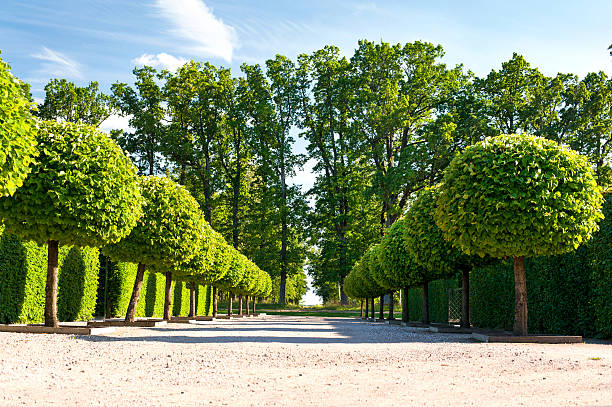A useful guide to planting a hedge in the garden. Our detailed step-by-step instructions will help you with the preparation and implementation of the garden hedge.
Properly plant a hedge
A hedge fulfills several functions in the garden. On the one hand, it offers a natural privacy screen, on the other hand, it serves as a shelter for various animal species – for example, beneficial creatures such as birds and insects. However, there are a few things to consider when planting a hedge.

Step 1: Find a suitable hedge for the garden
You can use many different plants for a hedge. Which ones are most suitable depends not only on your own taste, but also on the soil conditions, the growing season, and the location. Depending on the type of plant, it can take several years for a hedge to reach the desired size.
In addition to the popular boxwood, which only grows about ten centimeters a year, and the false cypress, fast-growing and easy-care hedge plants are enjoying increasing popularity. Most plants thrive in both shade and sun. Examples of fast-growing hedge plants are privet and hornbeam. The latter is a good choice for a hedge up to 3 meters high and is also easy to cut. In autumn, the green leaves turn golden yellow and remain on the shoots for a long time.
Privet is also very suitable as a cut hedge plant. Both the gold privet with yellow-colored foliage and the black-green privet with dark green foliage have an upright, loose habit and are also easy to trim. The common beech is also often used for hedge planting. Its bright green leaves turn reddish-brown in autumn. Other popular hedge plants include thuja, cherry laurel, and the red hedge barberry, which is good both as a natural hedge and as a small cut hedge.
Step 2: Choose the right time to plant
The autumn months are the ideal time for planting a hedge because then you can hardly expect longer dry and hot phases. Furthermore, the plants have enough time until winter to form strong roots. Alternatively, you can also plant your hedge in spring. However, keep in mind that plants need more water at this time of year, especially if there is little rain in the following summer.
Step 3: Trim the hedge regularly
Depending on the type of plant, hedges offer good privacy protection within a short period of time. In order for your hedge to have the appropriate density, the hedge plants must be cut back regularly. A pruning also prevents the hedge from growing too wide, but instead upwards. But you should also use hedge trimmers from time to time in the upper area so that the hedge does not thin out too much there. Be sure to wear suitable work clothing and safety shoes for this work to reduce the risk of injury!

The natural hedge as an alternative to the cut hedge
A dense cut hedge is not suitable for every garden, as it often takes up a lot of space. Interesting effects can also be achieved, for example, by staggering the planting of fast-growing hedges and shrubs. These also offer good privacy protection and make smaller gardens appear larger. Another alternative to the green hedge can be to line up flowering, leafy and fruit-bearing shrubs (e.g. lilac, elderberry, hazelnut, firethorn, viburnum). The so-called natural hedge wraps the garden in beautiful colors and scents and can be put together individually all year round.
